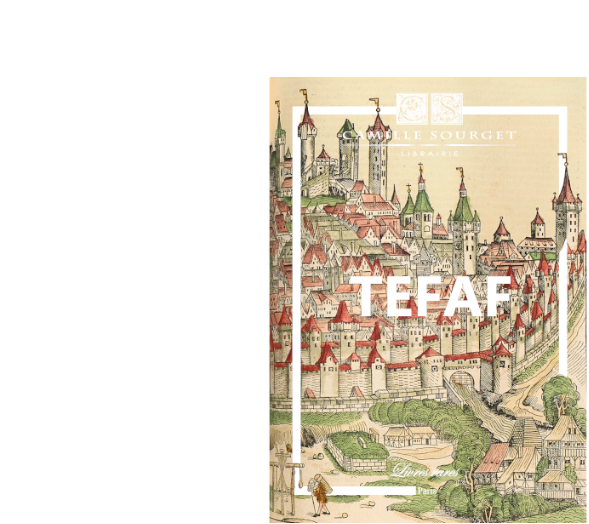The Guide of the Forest Rangers under the First Empire
in a superb binding by Tessier with Napoleon’s coat of arms.
Paris, 1808.
Baudrillart, J.J. New forestmanual, for the use of agents of all grades, Surveyors, Imperial and Municipal Forest Guards, Naval Marine officials for the search for Timber suitable for Naval Constructions; Owners and Wood Merchants, and all those involved in Wood Cultivation and its Employment in Economic Arts…
Paris, by Arthus-Bertrand, 1808.
2 volumes in 2 octavo volumes I/ lii pp., 460 pp., 2 folding tables; II/ (2) leaves, 579 pp., 29 plates including 4 folding, 3 folding tables. Long grain red morocco, gilt-tooled frame around the boards, large gold-stamped coat of arms at the center, finely decorated smooth spine, decorated edges, blue silk guards and linings, inner gilt-tooled roll, gilt edges. Period binding signed by Tessier with his gold-stamped coat of arms on the guard.
203 x 124 mm.
First and only French edition of this scientific and technical manual of imperial administration, translated and adapted by Jacques-Joseph Baudrillart (1774-1832) based on a reference book written by Friedrich August Ludwig von Burgsdorf (1747-1802), a German forest specialist renowned throughout Europe.
The work was intended to unify and codify the work of forest rangers, which under the Ancien Régime was more about hereditary or purchasable offices than functions matched to real competencies.
The first volume contains a summary of the forest code, a general section on natural history, and the description of several hundred plant species found in forests and woods. In the second volume, there are chapters containing introductions to geometry, mechanics, and construction, both civil and naval. Wood is considered both from the perspective of preserving natural heritage and its uses for civil society and the Empire’s armies.
Jacques-Joseph Baudrillart, agronomist and forester, retained his functions under the Restoration and published The Forest Code (1827) and then The Fishing Code (1829).
He is one of the most active propagandists of German methods. Engaged in 1792 as a non-commissioned officer in the Ardennes battalion, initially working in field hospitals, he discovered Germany in 1801 before joining the forest administration. Convinced of the technical advance of German forestry, he undertook in subsequent years the translation of works by Georg-Ludwig Hartig (1805 and 1807) and Friedrich-August-Ludwig von Burgsdorf (1808). Appointed in 1819 as head of division in the Water and Forests administration, he originated the spread of the thinning method and remained one of the main architects of the creation of the Royal School of Water and Forests in 1824.
The work is illustrated with 29 engraved plates and 5 folding tables.
Superb copy preserved in a very fresh binding signed by Tessier with Napoleon’s arms O.H.R. pl. 2652, tool no.7).
Successor of Lemonnier, Tessier was a binder for the Duke of Orléans before the Revolution, and then for the Imperial Treasury.
Napoleon loved books, continuously educating himself with them. A great reader, without being a bibliophile, he enriched his residences (Malmaison, Fontainebleau, Compiègne… and Saint Helena) with libraries, even had them transported to battlefields, and loved to gift books.

